Culture
The Impossible Museum: How India's Most 'BIMARU' State Built Its Most Advanced Cultural Institution
Abhishek Kumar
May 23, 2025, 02:20 PM | Updated Jul 01, 2025, 09:26 AM IST
Save & read from anywhere!
Bookmark stories for easy access on any device or the Swarajya app.
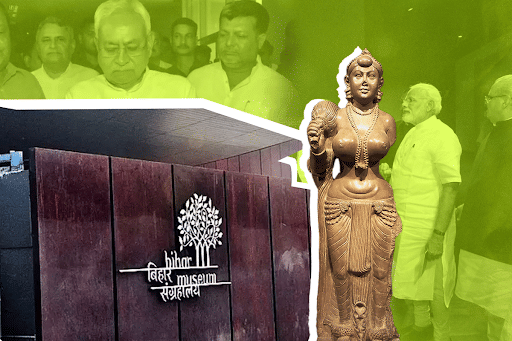
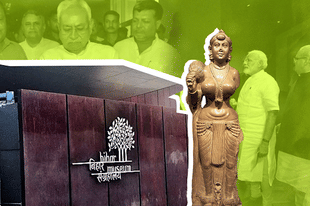
In 2017, when Prime Minister Narendra Modi visited Bihar Museum, he stood transfixed before a Kohbar painting by Godavari Devi. That moment captured something profound—India's most maligned state had built a world-class museum that rivals the best cultural institutions anywhere in the country.
Designed by Pritzker Prize laureate Fumihiko Maki, the museum houses treasures from the 2,000-year-old Didarganj Yakshi to contemporary installations by Subodh Gupta. Its galleries trace civilization from 400,000 BC stone tools to the present day. Children can be seen racing through experiential learning zones while scholars get to study in climate-controlled archives. The international visitors compare it to the museums in New York and London.
And yes, it also happens to have a GRIHA 5-star rating, consumes 53% less energy than regulatory norms, and seamlessly integrates the landscaping outside with the main building.
This happened in Bihar—the state synonymous with BIMARU.
How did this happen?
The Paradox of Modern Bihar
Most of us are used to the viral memes and videos against Bihar. Due to historical and contemporary reasons, Bihar is perceived as the lone state falling under the BIMARU category, still waiting to accelerate on its full potential trajectory. Its controversial present—headlined by falling bridges and increasing politicization—is not big enough to snatch the glory of the past.
The Mauryan dynasty sustained the civilizational idea of Akhand Bharat. Buddhism, Jainism, and many other major cultural shifts originated from the state. All of these achievements are well documented in text form, but the state always felt the absence of a visual avenue to amplify its glorious past.
"At the time, several policymakers deliberated on strategies to enhance the state's soft power. It was concluded that the state's rich legacy—renowned for its contributions to education and its tradition of kingship—should be prominently showcased," said Ashok Kumar Sinha, Additional Director of the museum.
Bihar's historical Patna Museum, spread over less than 13.9 acres, was not big enough to accommodate the state's grandeur.
So Chief Minister Nitish Kumar envisioned a new museum on Bailey Road of Patna. Anjani Kumar Singh, a senior IAS officer and an art lover himself, was given the responsibility of completing the task.
"The museum was envisioned to instill pride in Bihar's historical prosperity by highlighting landmarks like Nalanda University and iconic figures such as Chandragupta Maurya—showcasing the state's enduring contributions to global heritage," said Anjani Kumar Singh, who now serves as Director General of the museum.
In its current shape, Bihar Museum acts as a bridge between Bihar's rich heritage and contemporary architectural innovation. It stands as a testament to visionary planning, sustainable design, bureaucratic efficiency, and storytelling prowess of the nodal officer, architects, and agencies involved.
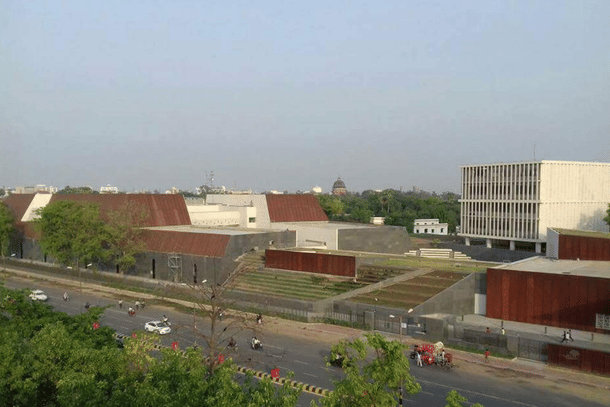
When Bureaucracy Chose Excellence Over Excuses
When quizzed about how the government-sanctioned administrative structure engaged in building this world-class facility differs from other bodies running such institutions in the country, Anjani Kumar Singh said, "It is all about intent. If bureaucrats want, they can use a small clause to stall the project, but they also have the capacity to clear the biggest of hurdles, like we did with the Public Interest Litigation in Patna High Court."
The first test came immediately. When the museum construction began on a prime land of 17½ acres between the Secretariat and the Patna High Court (HC), a few government buildings were destroyed to make ample space for it. Initially, the size of the space was itself a contention, since it was much larger than Patna Museum, which is spread over less than 13.9 acres of land.
In the PIL, petitioner Ashok Kumar, an academician, argued that nearly five hundred crores spending on the new museum would not be prudent for a state which is struggling to provide basic facilities to its citizens. He also complained of inefficiency in the maintenance of other museums and the non-transparent nature of government orders.
The case lingered long enough to trouble Anjani Kumar himself, who got frustrated with the process and asked Patna HC to pass an order stalling the museum's construction, since a written order would provide more clarity about the ways to relocate or change the way in which the museum was being constructed.
The HC declined the PIL and instead asked to go ahead with the project with the restriction that it won't be used for private purposes. "We direct that in case the museum becomes unviable, the building and other infrastructure shall not be alienated to private firms, but shall be utilized for public institutions or purposes," said the Patna HC, while dismissing the PIL.
Architecture as Philosophy: The Building That Breathes
The larger land area in fact became essential in accordance with the vision of the museum, which was designed to be experiential in nature. Nearly half of the museum's campus area is dedicated to structure, while the rest of it contains features such as landscaped courtyards, shaded pathways, and water bodies.
Canadian company Lord's Cultural Resource was chosen as master planner of the museum. The ultimate design was done by Pritzker laureate Fumihiko Maki-led Maki & Associates and Mumbai's Opolis Architects. Maki's campus design suited Anjani Kumar and his team the most, as it offered more options for interconnectedness between different zones.
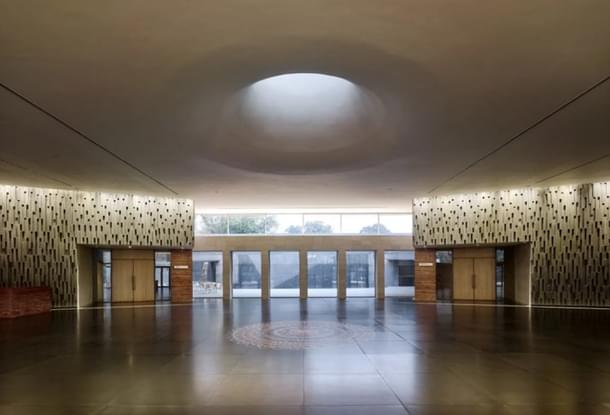
The experts wanted to ensure the integration of the natural environment into the museum. The interconnected landscape of built and open spaces, modest in scale yet in harmony with the natural land, fits in with this vision.
A large number of the trees already present here were left untouched for this reason. Additionally, compensatory afforestation has been carried out in the backyard. These trees reduce the need for energy consumption.
The campus is divided into distinct zones—entrance, education, exhibition, and administration. The multipurpose entrance enamors visitors with its soaring ceilings, cascading water curtain, strategic use of weathering steel—a material that evolves with time, much like the stories housed within the objects placed in the museum—fountains, and stone panels sourced from Bihar's diverse regions.
The skilled interplay of nature and materialism is useful in making audiences stay for longer than usual entrances. Spending a few minutes in the naturally soothing atmosphere acts as a transitory phase for someone who has just come inside from Patna's heat and is ready to visit the air-conditioned galleries.
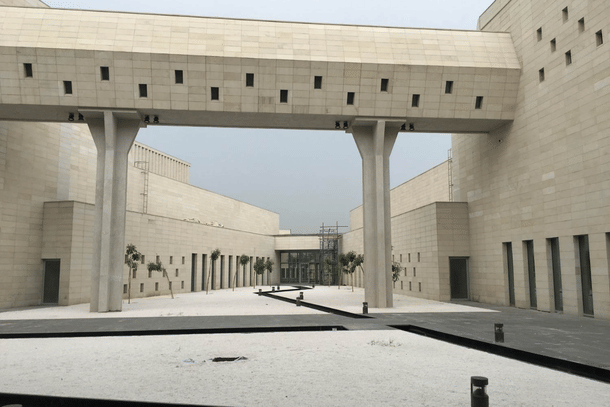

The Yantra made by Subodh Gupta stands as a contemporary artistic statement, bridging ancient symbolism with modern expression.
Spacious and heat efficient courtyards demonstrate how traditional architecture principles can meet contemporary sustainability standards. Huge courtyards in front of Museum's shop provide gathering spaces that encourage longer visits.
Wide open spaces help in heat sustenance without relying entirely on mechanical cooling. The Grand aerial view of Bihar Museum reveals how the building integrates with its surroundings rather than dominating them.
Environmental Integration by Design, Not Afterthought
More than one quarter of the total living area gets direct sunlight in accordance with the National Building Code 2005. Courtyards and vertical windows work as primary receivers of sunlight and then breathe it out into galleries and stone corridors.
For cutting down radiation, vertical fins have been used in the administrative area. Additionally, a green roof is also ensured in the staffing area.
The Green Rating for Integrated Habitat Assessment (GRIHA) Council has given a five-star rating to the Bihar Museum. According to GRIHA estimates, its Energy Performance Index (EPI) is 66.18 kWh/m²/year.
The museum consumes 53 percent less energy than the prescribed regulatory norms. All outdoor lights are connected to automatic switches. The project also integrates renewable energy technology, with a solar photovoltaic system installed on-site.
Thermal comfort is supported by a water-cooled scroll chiller with a Coefficient of Performance (COP) of 6.16, compliant with the Energy Conservation Building Code (ECBC).
The museum consumes 60.5 percent less water for building needs and 62.5 percent less water for landscaping compared to the GRIHA base case.
Through these steps, Bihar Museum has successfully reduced the impact of air contamination, water contamination, thermal disturbance, light disturbance, soil contamination, and noise disturbance.
The location demanded more to stop the impact of noise disturbance, which was achieved through a separate parking entrance from a different gate of the museum. This does not allow vehicular congestion, which is a norm as one crosses the coverage area of the museum.


The Museum Experience
Lying close to the reception is an electronic orientation board, which gives snapshots about each gallery, their types, time period (for historical galleries), and key objects.
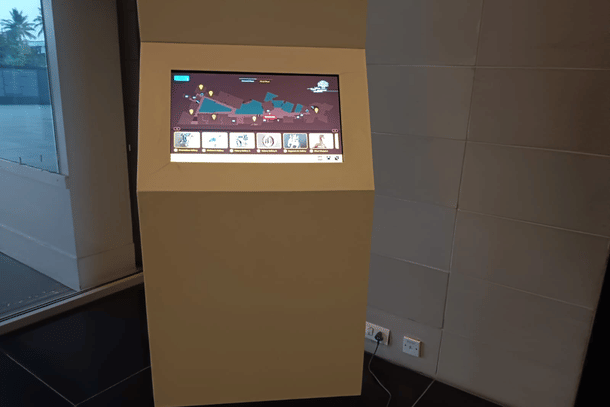
The museum's actual journey begins with a grand physical form of this introductory feature by the name of Orientation Gallery. This gallery establishes a narrative framework and acts as a compass for visitors.
It contains vertical structures—each representing a different gallery—containing a few artifacts from the era which have been shown in these galleries.

For instance, since Gallery A contains artifacts from 400,000 BC to 200 BC, punched coins belonging to 400 BC and other artifacts have been placed in the Orientation section.

At the end of the gallery, a theater is located which displays a 12-minute history of Bihar in audio-visual mode. Its simplicity and imagery used make the movie accessible to consumers of every age group.
As one checks out of the theater, grand galleries waiting to display theatrical visuals in live and elaborating form are waiting.
Gallery A: Ancient Bihar (400,000 BC to 200 BC)
The journey begins with three historic galleries chronologically named as A, B, and C. The entrance of Gallery A announces that its collection ranges from stone tools to those used by mammoth empires. The first sub-section begins with the depiction of the evolution of human tools from raw forms to sharp edges.
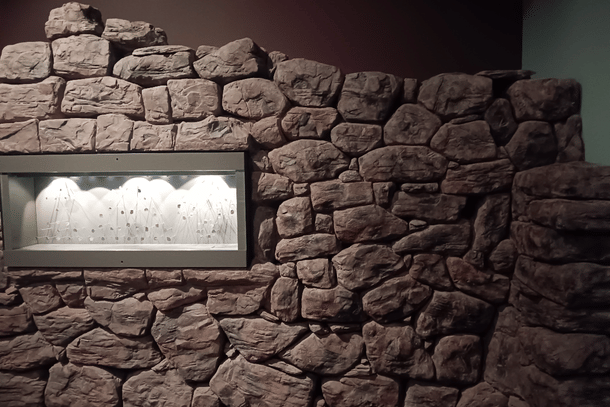
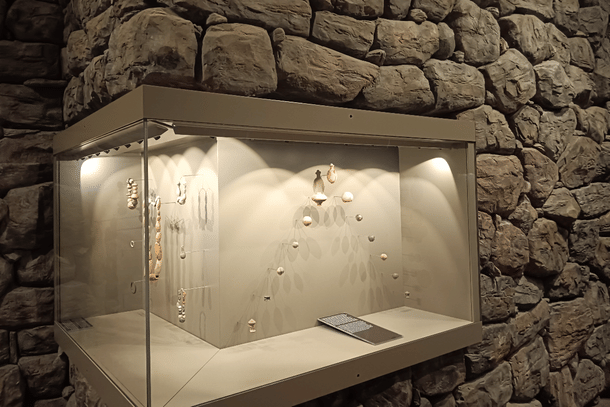
Tools beginning from pre- and proto-historic era till the Chalcolithic age have been presented in it. The refinement in tools with time lapse is clearly visible.
Potteries from Chalcolithic and Megalithic culture are displayed alongside copper artifacts that gleam under strategic lighting. Pestle and quern-stones tell stories of daily life in ancient times.
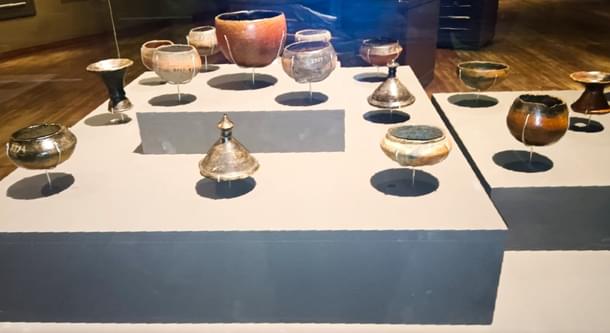

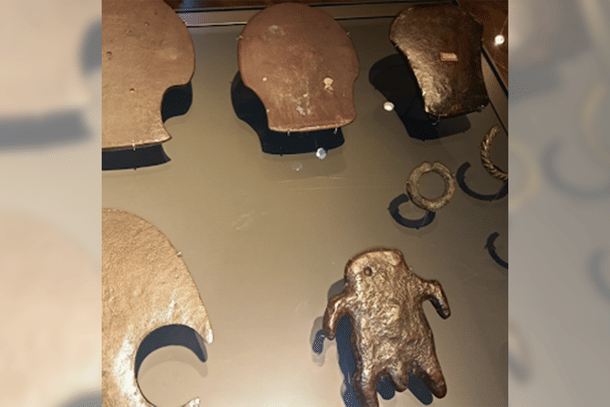
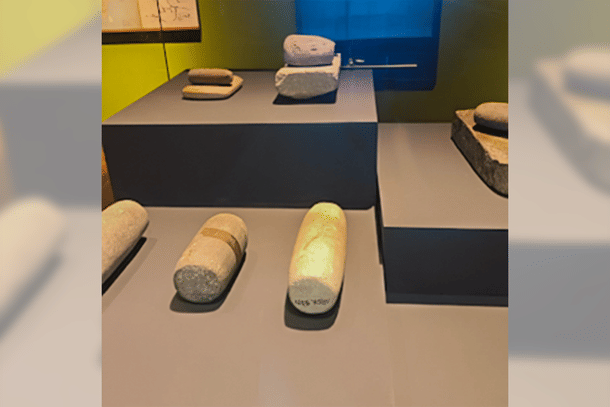
Subsequent sub-sections cover Mahajanapadas, Buddhism, Jainism, the Nanda dynasty, and the Maurya dynasty with special emphasis on Ashoka. While documenting Ashoka's journey, a separate spot has been reserved to present how impactful the Kalinga War was in his life.
The representation of Kalinga War is particularly moving, showing the transformation of a conqueror into a messenger of peace.
While showing them, cultural symbols such as coins, fortification methods, edicts, and the Ashoka Chakra have been given more prominence. The Mauryan Edicts stand as testimony to ancient governance.
The Ashoka Chakra found in Kumhrar, Patna, connects visitors directly to the emperor's legacy.
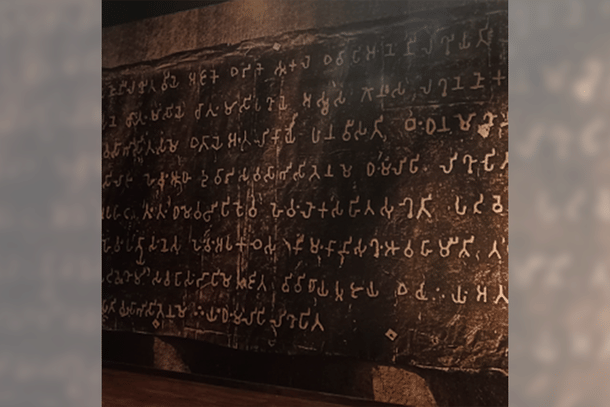


The portion showing the influence of religions is named 'Spiritual Awakening' and it contains minute details related to Buddhism and Jainism.
A specific sub-section for Buddhism traces the religion's journey from Bihar to the world. Special zones for Jainism and Buddhism ensure both faiths receive detailed treatment.
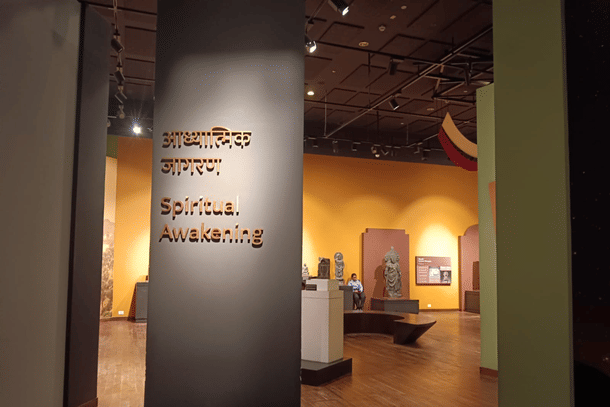

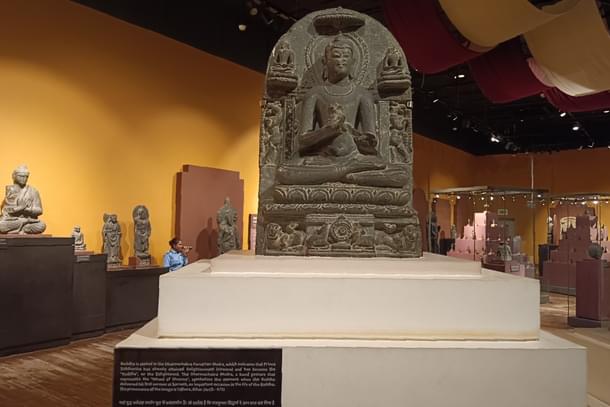
It won't be an exaggeration to say that methods used for educating visitors work as a crash course for recorded history in Gallery A. Anyone who has been to Bihar Museum certainly would agree to it.
Gallery B: Brilliance of the Classical Period
Gallery B provides visitors with insights into the Shunga, Kushan, Gupta, and Pala dynasties. The efficient use of lighting creates dramatic effects that highlight the artistic achievements of these periods.

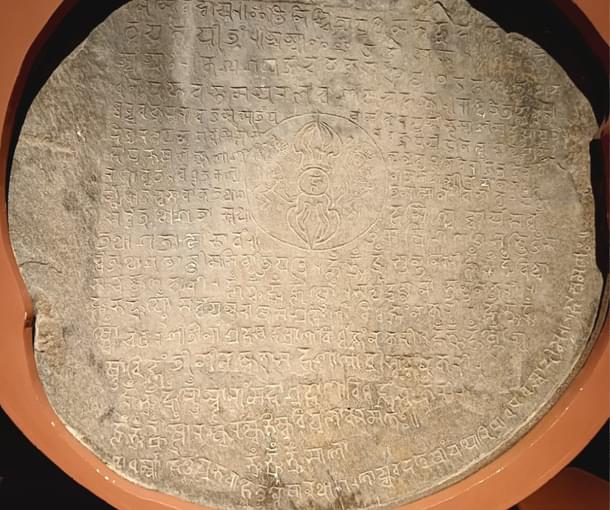
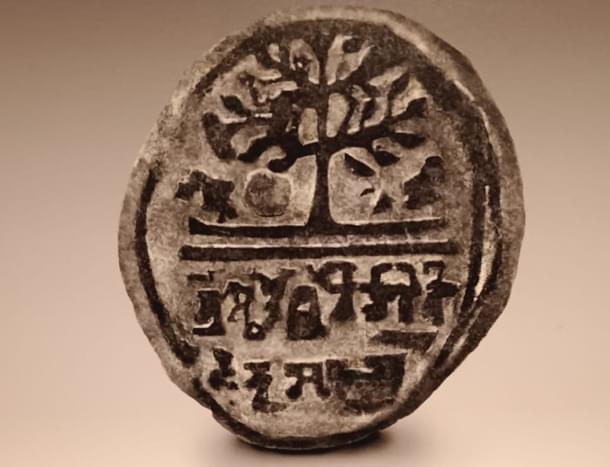
Shunga-era 'Salabhanjika' sculpture, Kushan terracotta Buddha head mini-sculptures with Greco-Indian influences. These Buddha heads are shaped in such a way that the image looks half Indian and half Greek—a clear indication of cultural relations prevailing between India and Greece during the Kushan period.
A Gupta red sandstone four-armed goddess from near Mundeshwari Temple represents the artistic heights achieved during India's golden age. An inscribed circular stone tablet of Gupta Period provides direct evidence of administrative practices.
A terracotta inscription describing Arogya Vihara of Gupta Period with possible connection to famous physician Dhanvantri links medicine and governance.


For things like Nalanda and Odantapuri universities, and the Mundeshwari Temple, which could not be brought into the museum, the administration decided to install life-sized replicas of Nalanda and Odantapuri universities and added a screen for visual representation of the Mundeshwari Temple.
Touch displays to showcase Nalanda University allow visitors to explore the ancient center of learning interactively.

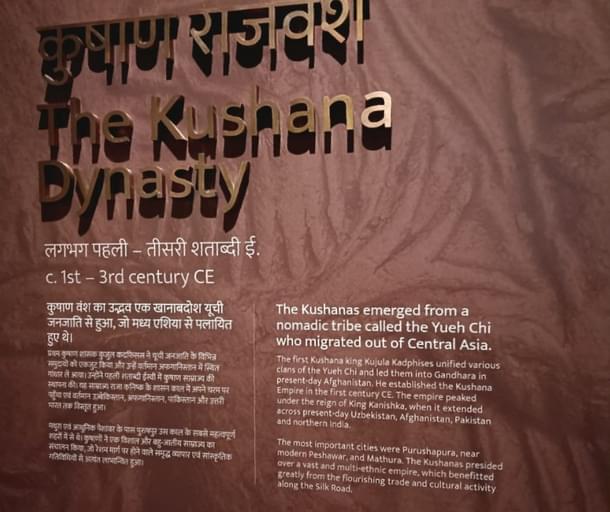
Special emphasis has been given to the depiction of Mahaviharas as well. Coins and terracotta figurines vividly depict ancient Bihar's art, education, and daily life, celebrating its cultural legacy.
Terracotta mini-sculptures of Buddha's head and hair are shaped in such a way that the image looks half Indian and half Greek. This is a clear indication of cultural relations prevailing between India and Greece during the Kushan period.
Most of the artifacts presented in Gallery B were recovered from Kurkihar and Telhara villages in Bihar.
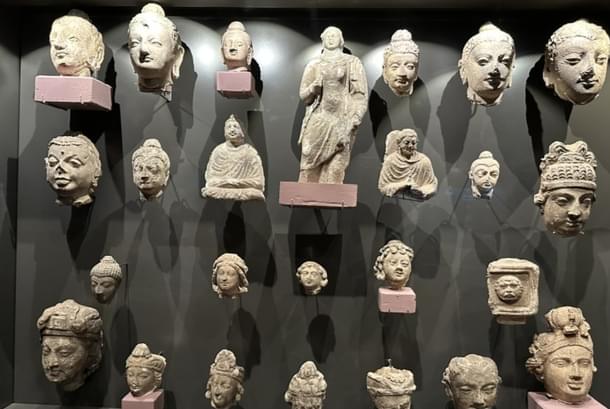

Gallery C: Medieval Bihar and Cultural Complexities
Gallery C shows glimpses of medieval Bihar ruled by Delhi and Bengal Sultanates, Mughals, the Sur dynasty, and ultimately the British.
Cultural highlights of the gallery include the description of Sufism and Bihar's deep-rooted connection with Sikhism. A miniature portrait of Maharaja Ranjit Singh represents the Sikh empire's reach.
Gallery C's collections range from seemingly insignificant hookah bases used by Nawabs to the pistols, swords, documents, and Rupaiah and Paisa used by Sher Shah Suri.

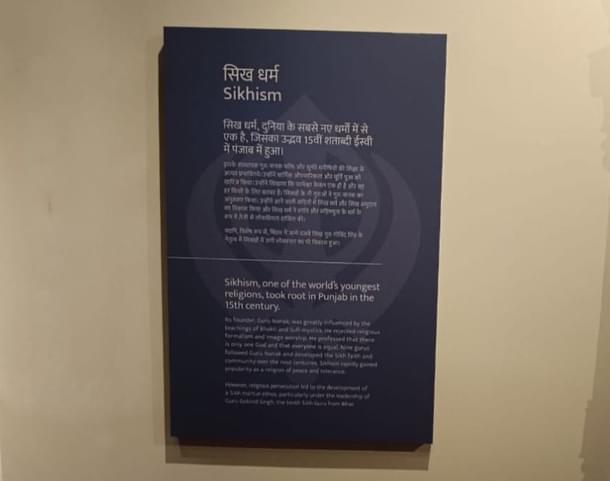




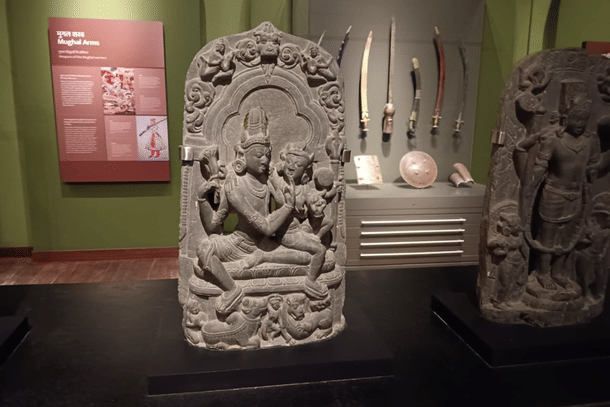
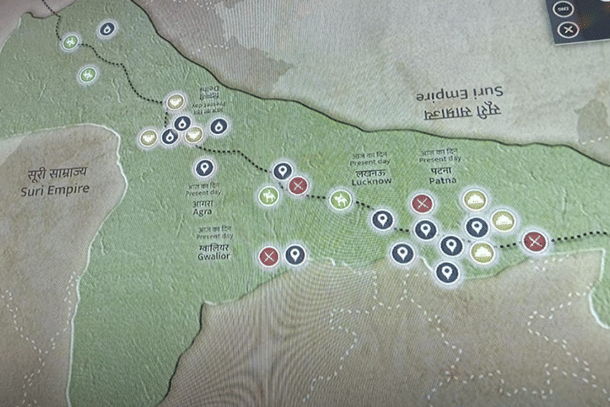
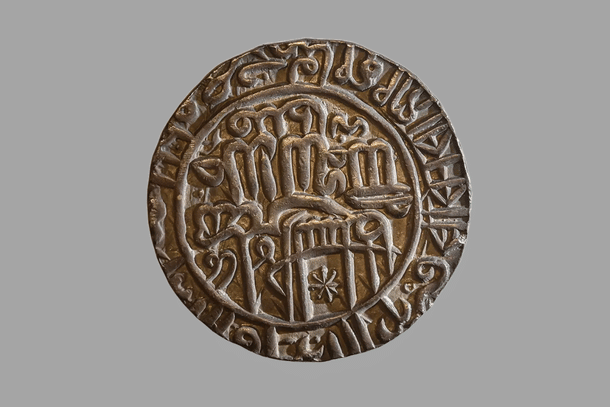


The Crown Jewel: Didarganj Yakshi
Despite these dignitaries, the crown jewel of all historical galleries (A, B, and C) is the Didarganj Yakshi, a 5 feet 2 inches tall statue made of Chunar sandstone. It is present in the historical art section of the historical galleries.
Interestingly, before being discovered, its back was used by people of Didarganj—who never tried to flip it—to wash clothes.
Yakshi is considered to surpass the standards of feminine beauty prescribed under Sanskrit and Pali texts. "Her face is beautifully sculpted, her skin folds delicately at the neck and waist and she is heavily adorned. She holds a flywhisk over her right shoulder," reads her description.
At the time of its discovery, the British held Indians as inferior claiming that they did not have a sophisticated civilization to have leisure for great art. Yakshi's almost perfect appearance was crucial in breaking this myth in the first half of the 20th century.
In the past it has been described as 'Mona Lisa of the East', which is absurd since Yakshi predates the Mona Lisa painting by more than a millennium. Also termed as Mona Lisa of India from Eurocentric perspective, she represents indigenous artistic excellence that needs no foreign validation.

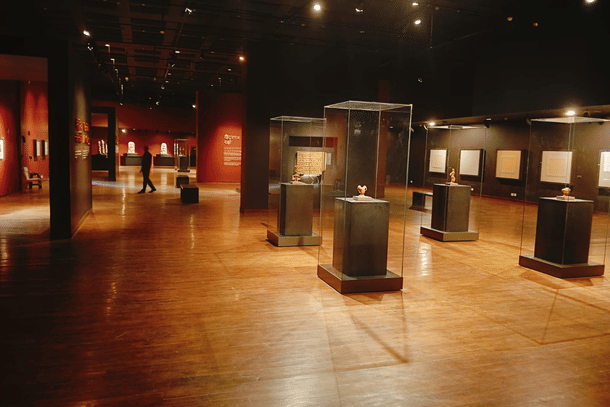
The Diaspora Gallery and Regional Art Gallery
Other ways to depict Bihar's history and culture are through recent arts and contributions to mankind. The Regional Art Gallery and Diaspora Gallery fulfill this role.
The Diaspora Gallery is particularly designed to connect Biharis to their global footprints. The gallery mainly talks about girmitiyas, who were laborers made to work in farms and factories located thousands of miles from their birthplace. Most of them belonged to Bihar and Uttar Pradesh, arguably the two most impoverished regions during the 19th and 20th centuries.


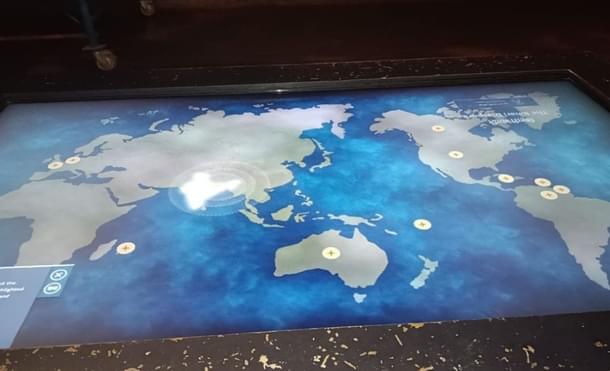
Despite being as brutal as the slave trade, it is rarely spoken of in the same vein. Though the girmitiya system ended after the First World War, most of them never had means to go back, so they settled there.
Today, these girmitiyas hold influence over Fiji, Guyana, Mauritius, Seychelles, South Africa, Trinidad, Jamaica, Martinique, Guadeloupe, Cayenne, Belize, Grenada, St. Lucia, St. Vincent, St. Kitts, St. Croix, Suriname, and Nevis.


Bihar Museum has a massive interactive map showcasing Bihar's journey to different parts of the world. Additionally, a screen-touch interactive portal, which shows the history of Biharis with a particular country, has been provided.
Various audio recordings of songs which they formed en route to their troubling life are also available here. One can listen to Girmitiya music in the Museum, experiencing the emotional journey of these migrants. Old photos of Girmitiyas in the museum provide visual testimony to their struggles.

The Regional Art Gallery is another marvelous collection of Bihar's artistic heritage. The gallery highlights visual arts, crafts, and performances of the state's ethnic communities. It depicts iconic folk art styles such as Madhubani, Kohbar, Godhana, and Tikuli paintings that reflect local folklore and traditions.
When Prime Minister Narendra Modi visited the Bihar Museum in 2017, a Kohbar Painting made by Godavari Devi enamored him. Kohbar is the room where the bride and groom meet for the first time after the wedding.

A terracotta sculpture of Sama-Chakeba has also been a distinctive collection in the art gallery. Sama-Chakeba is a festival of the bond between brother and sister, celebrated in the Mithila region of India and Nepal. The brother's love and sacrifice for his sister was instrumental in overturning the punishment meted out to Sama by her father Lord Krishna.
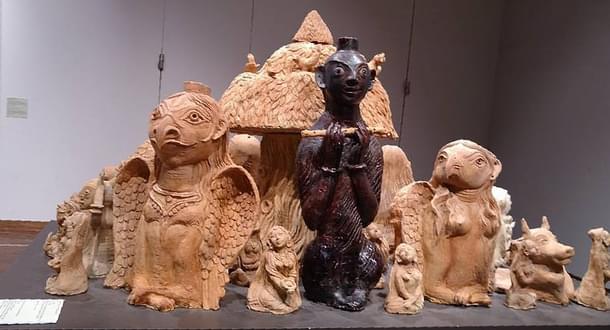
But the museum is not just about the collection of arts. It also gives artists avenues to explore their creative sides and interact with people having a similar intellectual level.

A special gallery has been dedicated for artists to exhibit their art. When Swarajya visited the Museum, renowned painter Milan Das' paintings were on display.
For Das, painting has been his childhood hobby, nurtured by his supportive family. Regarding Bihar Museum, he is absolutely certain that it will reach new heights.
"Anjani Ji and his officers are extremely efficient. They won't let me face any problem and do everything to ensure that my collection gains traction among people. You can see it in the register," said Das, while showing his register which was half filled with compliments from visitors.
Children's Gallery
The seriousness which is on display in the aforementioned galleries takes a lighter turn when we move to the children's gallery. But it doesn't mean that curators were not serious about it.
In fact, the children's gallery was possibly the toughest to imagine. The age range of those interested varies from a few months to 16–18 years, and making the gallery adventurous for each age category sounds impossible—until you see small kids running in makeshift jungles of the children's gallery, while relatively older ones are busy learning the basics of archaeology and history.

The children's gallery is in fact more experiential for its target demography, which is why mothers can be seen shouting at their kids, ironically instructing them to 'stop shouting'.
Through printed animations and other methods of visual stimulation, it evokes a sense of curiosity about Bihar's past—especially about the Maurya dynasty—in children. When one is done reading, a fabricated Mauryan throne is ready for an impressive experience of ruling Patliputra.



Sher Shah Suri and his reigns, especially coins, have also been given a special place in the gallery.
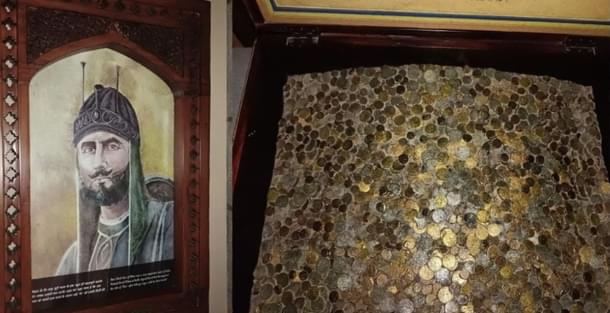
Moving a bit further, a wildlife sanctuary, staircase, a fully dedicated room describing excavation and its methods, the history of Bihar, an archaeological map of the state, and a touchscreen monitor explaining excavation work act as natural curiosity arousers for small kids.
A Wildlife Sanctuary for children creates an immersive environment. Children have a great time here, as evidenced by their enthusiastic participation.
Paintings for children at display use bright colors and simple narratives. A virtual guide for excavation teaches archaeological methods through gamification. The presentation of excavation makes complex processes understandable. A demo site for children to begin the excavation allows hands-on learning—children can actually dig and discover replica artifacts.
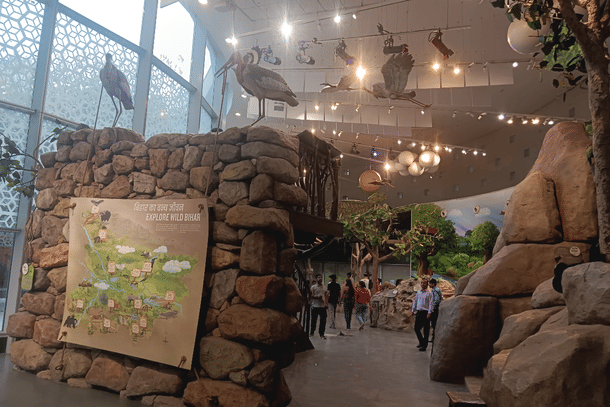
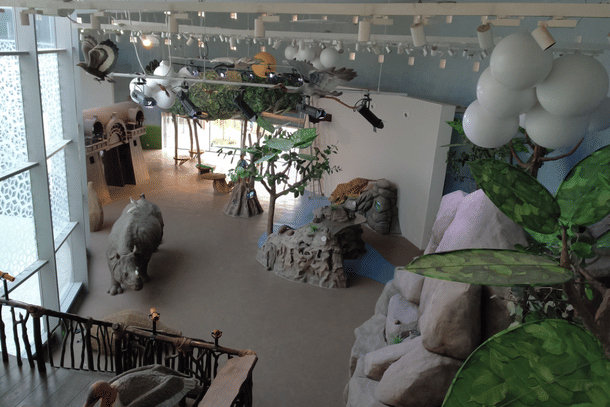
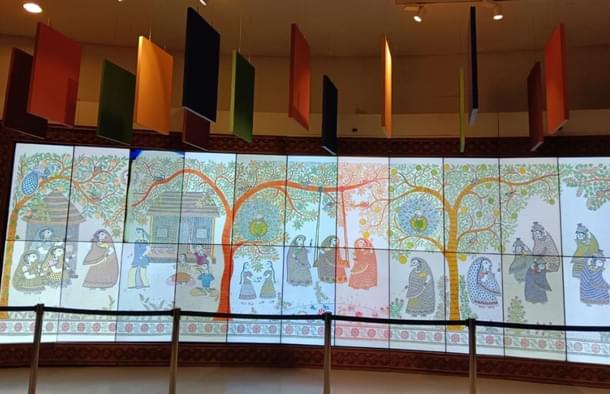
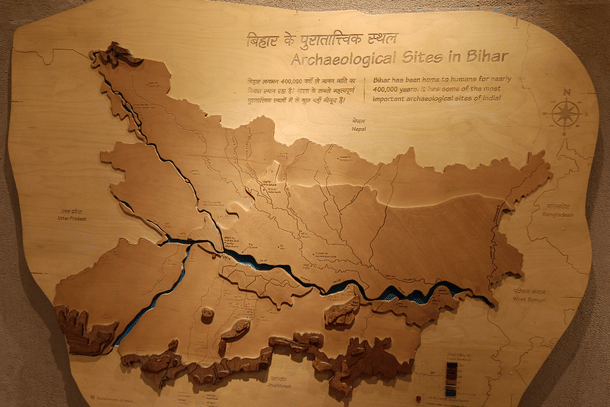
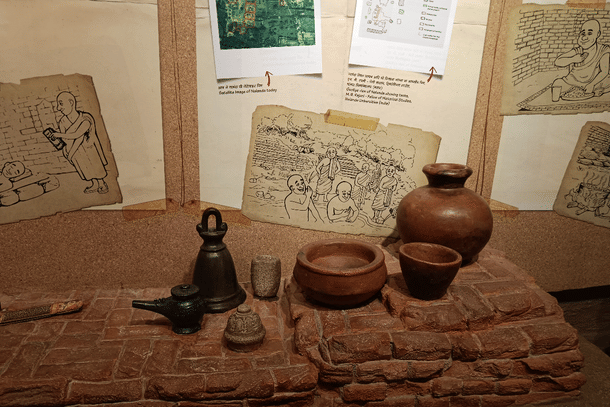



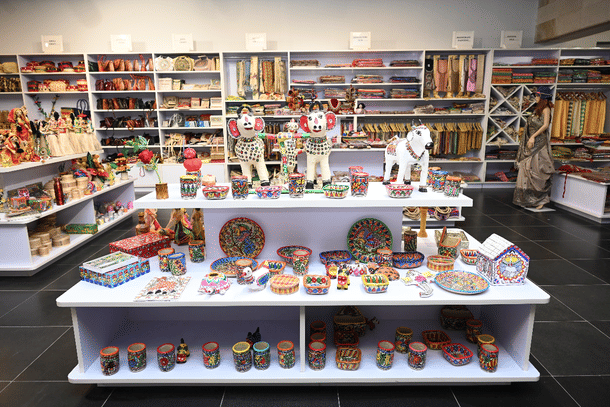
Final Words
Through its meticulously curated galleries, sustainable design, and experiential storytelling, Bihar Museum is a wonderful description of the state's pivotal role in Indic civilizational values and journey.
The coveted structure counters state-specific stereotypes with an amalgamation of historical grandeur and modern techniques in line with Prime Minister Narendra Modi's call for 'Vikas Bhi, Virasaat Bhi'.
Shubham Bhardwaj, Senior Resident Doctor at AIIMS Patna, who is a frequent visitor of the place, summed up the Museum's grandeur using state symbols in the following words:
"Bihar Museum batata hai ki Bihar ki jaddein peepal ke vriksh ki tarah mazboot hain, Bihar ki boli gauriya ke chehchehaahat jaisi madhur hai,
Aur woh darshata hai ki kaise Bihar, gende ke phool ki tarah, Bharat ke sunehre rangon ka pratinidhitva karta hai (It tells that Bihar's roots are as strong as those of the peepal tree, Bihar's dialect is as melodious as the chirping of a bulbul, And it reflects how Bihar, like the marigold flower, represents the golden hues of India)."
Bihar Museum will always draw appreciation for positive aspects of governance, where everyone came with a clear intent and a common vision.
So the question was never how Bihar built this museum. The question is why we doubted it could.
Note: This is Part 1 of Swarajya's coverage on Bihar Museum. The second part will feature an interview with Dr. Ranbeer Singh Rajput, Bihar Museum's Deputy Director.
Abhishek is Staff Writer at Swarajya.





